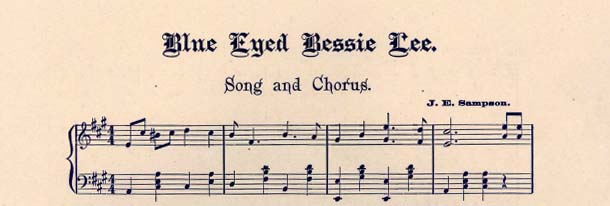
Historic Sheet Music Collection
Document Type
Score
Publication Date
1913
Lyrics
VERSE 1
Lonesome Johnie Warner,
Sitting in a corner of a swell café,
Eating his heart away because he had no girl,
At another table,
Sat a girl named Mable with a fellow who
Johnie knew and his brain began to whirl
The girl had caught his eye and Johnie began to cry.
CHORUS 1
Where did you get that girl?
Oh! You lucky devil.
Where did you get that girl?
Tell me on the level
Have you ever kissed her,
If she has a sister
Lead me, lead me, lead me to her mister
Gee! I wish that I had a girl
I’d love ‘er I’d love ‘er
Oh goodness how I’d love ‘er
If you can find another,
I’ll take her home to mother,
Where! Where!
Where did you get that girl?
girl?
VERSE 2
Johnie found a corker,
Started in to walk her down the avenue.
Down to the parson who would make them man and wife,
Parson Lee received him,
And when he relieved him of the marriage fee
Parson Lee said never in my life,
Have I seen such a miss say Johnie tell me this.
CHORUS 2
Where did you get that girl?
Oh! You lucky devil.
Where did you get that girl?
Tell me on the level
Have you ever kissed her,
If she has a sister
Lead me, lead me, lead me to her mister
Gee! I wish that I had a girl
I’d love ‘er I’d love ‘er
Oh goodness how I’d love ‘er
If she’s here long
I’m liable to give away my bible,
Where! Where!
Where did you get that girl?
girl?
Recommended Citation
Kalmar, Bert and Puck, Harry, "Where Did You Get That Girl" (1913). Historic Sheet Music Collection. 1728.
https://digitalcommons.conncoll.edu/sheetmusic/1728
The views expressed in this paper are solely those of the author.
Comments
Words by Bert Kalmar
Music by Harry Puck
Illustrator: E. H. Pfeiffer
Photograph: Martin, Cornell, Martin
Oh! You Lucky Devil
Kalmar & Puck Music Company, 152 West 45th St. New York City
Copyright 1913 by Kalmar & Puck Music Co. International Copyright Secured. Copyright Canada 1913 by Kalmar & Puck Music Co.
“Some of these resources may contain offensive stereotypes. Such materials should be seen in the context of the time period and as a reflection of the attitudes of the time. The items are part of the historical record, and do not represent the views of the library or the institution.”